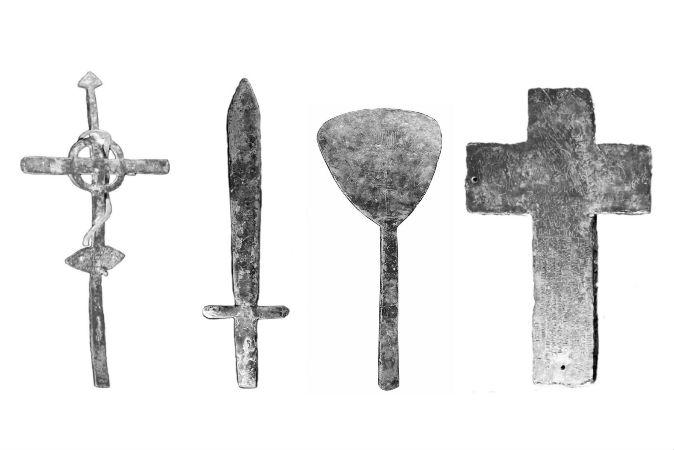Medieval scholar Donald Yates, Ph.D., is shedding new light on controversial artifacts found near Tucson, Ariz., in the 1920s.
At least 32 cast-lead artifacts, many of them crosses, were excavated from compacted soil in the Santa Cruz River valley outside Tucson. The make of the artifacts and their inscriptions suggest a colony of the Holy Roman Empire existed in the area in 8th or 9th century A.D., Yates said.
Contact between the Old World and the New World is conventionally held to have first occurred with Viking expeditions around the 10th century A.D. Suggestions of contact before this date—and the Tucson artifacts are not the only artifacts hailed as indications this was the case—have long been dismissed by mainstream historians.
Holy Roman Hoax?
The Tucson artifacts have been decried as fake. But Yates says no one with the proper credentials to assess them has called them a hoax.
On the contrary, Byron Cummings, who was the founder of the classics program and archaeology at the University of Arizona; and Neil Judd, who headed the Smithsonian’s excavations at Chaco Canyon, believed them genuine.
“To make that decision, you have to have credentials in certain areas—in medieval Latin and paleography (the study of ancient manuscripts) and epigraphy, which is the study of inscriptions,” Yates said.
“I’m a classicist, I have a Ph.D. in classical studies specializing in medieval Latin and paleography. I have a whole row of publications in that very, very tiny specialized area.”
He said another uniquely qualified person to study the artifacts was Wake Forest University Professor Cyclone Covey in the 1970s. “His position was always … [that] there’s nothing phony about them,” Yates said.
Covey wrote a book titled “Calalus” about the colony he believed left these artifacts behind. One inscription reads: “Calalus was an unknown land.”






